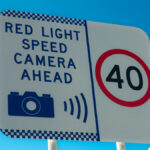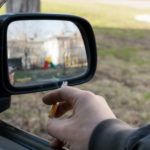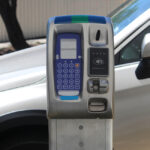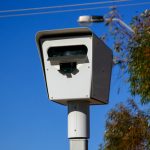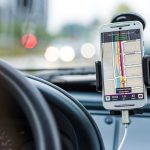Roundabouts in New South Wales: What are the Rules and Potential Penalties?
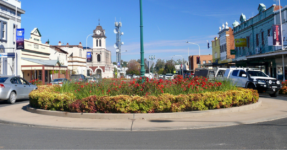
The New South Wales Government has invested heavily in building new roundabouts in recent years.
They were originally touted as being a cost-effective way to manage traffic at intersections – cheaper to maintain than traffic lights and certainly more effective and efficient in remote rural areas, where there may not always be an available and reliable power source.
Improper use can lead to collisions
Roundabouts don’t cause accidents, drivers do. But it would appear that roundabouts are actually one of the biggest hazards on our roads, with figures released last year confirming that their improper use accounts for an average of 10 accidents on New South Wales roads each week.
In fact, the site in New South Wales that recorded the second highest number of accidents in the year was the Five-ways Roundabout at Miranda in Sydney’s south, with 271 accidents reported.
Many of the accidents, according to road safety body, the NRMA, occur because people don’t really know how to use roundabouts properly.
The organisation is calling for better driver education, with some of its focus being the rules surrounding the use of roundabouts.
So, what are the rules? And what are the potential penalties for disobeying them?
Rules of the roundabout
At the most general level, the basic rule relating to roundabouts is: You must slow down on approach and give way to all of the traffic already on the roundabout. To ‘give way’ means to slow down and, if necessary, stop to avoid a collision
On approach, you must indicate if you intend to to turn left or right, or intend to make a U-turn at the roundabout, in which case you indicate right.
You must continue to use your indicator on the roundabout, and use as well as stay in the left lane if you are going to turn left (unless the road markings indicate otherwise).
While you can change lanes while on the roundabout if it is safe for you to do so, you must signal your intention to do so using the same rules you would at any other time on the road when changing lanes.
You must signal left when leaving a roundabout, if it is practical to do so, and switch off your indicator once you have left it.
If you are going straight ahead on a small single lane roundabout, and it is not practical to indicate, then you do not have to do so.
That’s a thumbnail sketch of the rules, so what about offences for not following them?
Driving offences – roundabouts
Typically, the most common driving offences that occur at roundabouts are failing to give way and failing to indicate.
Traffic offence NSW: Failing to indicate
In New South Wales, failing to indicate, or improper use of indicator signals, attracts a fine of $194 and two demerit points. A maximum fine of $2,200 if the a person elects (chooses) to take the matter to court.
This covers not indicating as required or at all, as well as failing to switch off your indicator once you have left the roundabout.
Traffic offence NSW: Failing to give way
Failure to give way is an offence that could cost you $349 and three demerit points. A maximum fine of $2,200 if the a person elects (chooses) to take the matter to court.
The survey of crash sites across New South Wales also pointed out a high number of road accidents occur when vehicles are required to merge, otherwise known as changing lanes.
Changing lanes and merging onto the motorway
When merging, you must always give way to the other vehicles already in the lane you want to move into. You must slow down and wait for a gap, and indicate that you want to change lanes, as well as turn your indicator off when you have merged.
When you’re driving on a road and the number of lanes or lines of traffic reduces, and there are no longer any road markings, you must give way to the vehicle that’s ahead of you. This is called a zipper merge.
When merging, always be acutely aware of blind spots, where bicycles and motorcycles may be, but can’t be seen.
While the government spends millions each year on fixing, maintaining and designing roads, as well as on education programmes for drivers, it says that these initiatives don’t decrease incidents and accidents on their own, and all road users have a responsibility to obey the rules and drive with care for themselves and others. It’s only through combined effort and mutual cooperation that we can reduce accidents.
There are few cities in the world as congested as Sydney.
At one point last year, former Premier Domenic Perrotet mooted the idea of a ‘road user charges’ for Sydney drivers as a move to combat the number of people on the road. The plan, unveiled mid-last year, had general cabinet approval, but it’s unclear whether it will go ahead in its current form.
Accident ‘hot spots’ in Sydney
Of course, there’s likely to be reasonable pushback from Sydney-siders over additional charges because they’re already heavily slugged with tolls which were introduced to prop up the government coffers to pay for roads.
All road users – there are about 6 million registered cars across the state – also contribute to the cost of roads through car taxes and vehicle registration.
In New South Wales the top accident hotspots last year were:
- Nine Ways Roundabout, Kingsford with 280 accidents.
- Five Ways Roundabout, Miranda with 261 accidents.
- M4 at Parramatta Road with 181 accidents.
- M4 at Silverwater Road with 125 accidents.
Needing advice for a traffic offence?
If you need advice regarding a traffic offence, call Sydney Criminal Lawyers anytime for case-specific advice on your situation from an experienced, specialist traffic lawyer.


